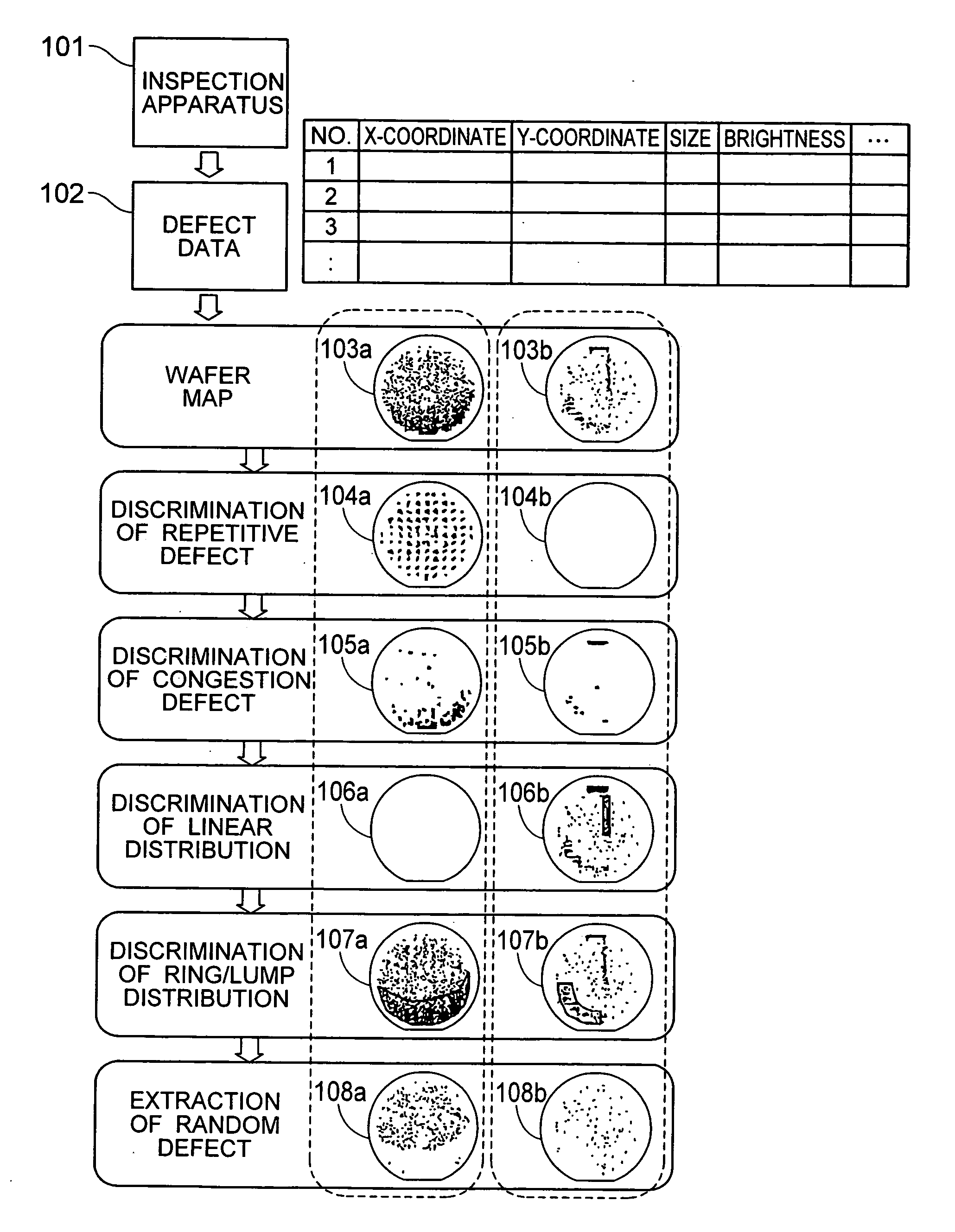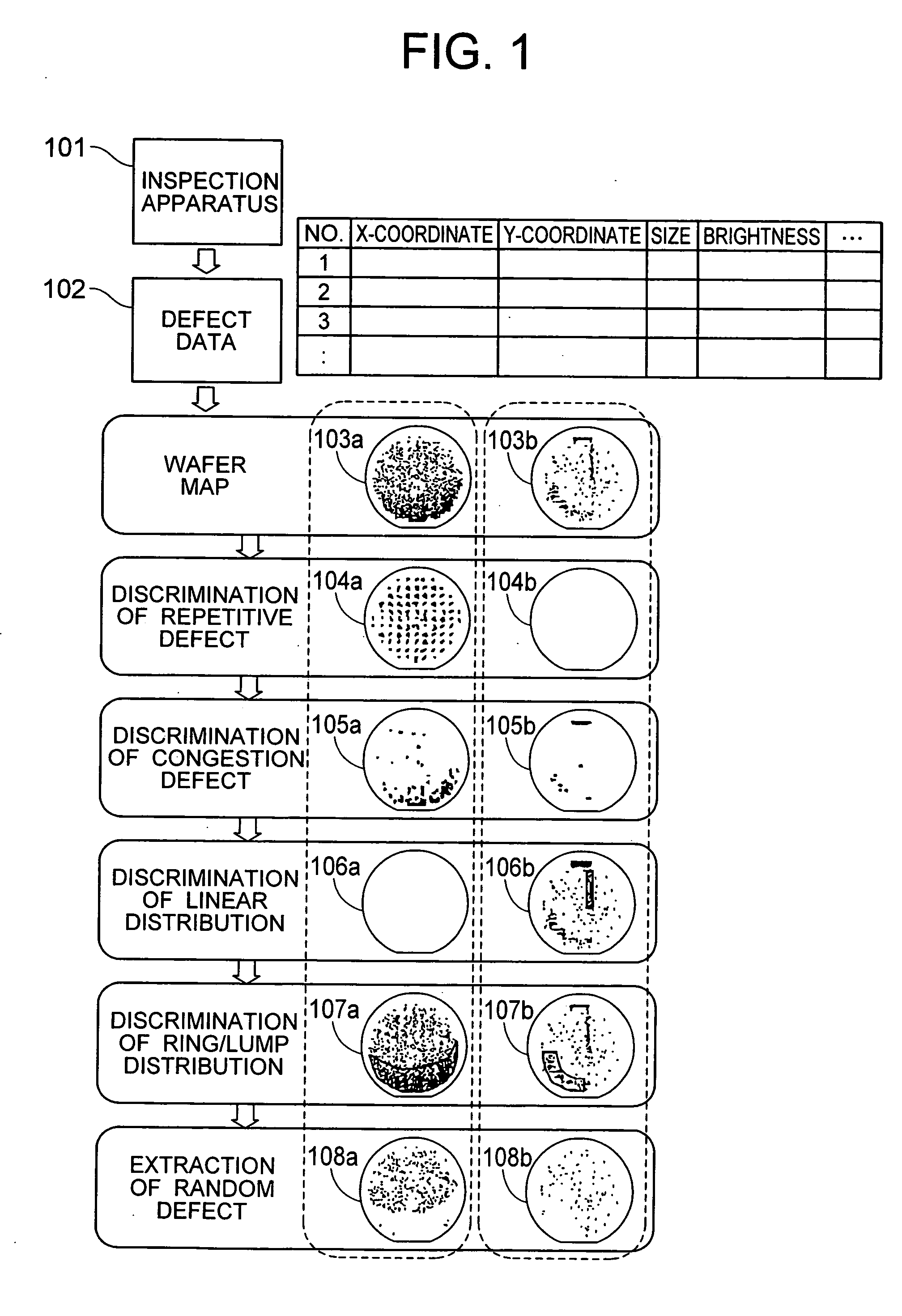Method for analyzing defect data and inspection apparatus and review system
a technology of defect data and inspection apparatus, applied in the direction of image enhancement, semiconductor/solid-state device testing/measurement, instruments, etc., can solve the problems of large amount of data to be accumulated, cannot be used for distribution, and cannot be recognized as a cluster, etc., to achieve the effect of easy identification of the cause of defects in the apparatus or process
- Summary
- Abstract
- Description
- Claims
- Application Information
AI Technical Summary
Benefits of technology
Problems solved by technology
Method used
Image
Examples
first embodiment
[0032] In the defect data analyzing method according to the invention, defect data 102 produced from a semiconductor substrate inspection apparatus 101 includes at least the coordinates of defect position. Shown at 103a, 103b are wafer maps for showing the positions of defects expressed by a coordinate system with its origin selected as one point from the wafer. The coordinates of defect that the inspection apparatus produces can be expressed by a coordinate system with its origin selected as one point from the wafer or by coordinate systems with their origins selected from the respective chips of the wafer. In the former case, the coordinate values X, Y of defect are used as they are, but in the latter case it is necessary that the coordinates of defect within a chip be converted to be on another coordinate system by using chip arrangement information and chip size information. The defects on the wafer map are respectively classified on the basis of its defect distribution into dis...
second embodiment
[0075]FIG. 16 shows the construction of the inspection apparatus according to the invention.
[0076] The pattern information adding means 301 adds sampling condition number in addition to the above information. It manually groups the dictionary patterns using the same sampling condition, and attaches the same sampling number. When there is no sampling condition corresponding to the number, sampling condition generation means 307 generates the sampling condition.
[0077] The sampling condition generation means 307 generates the sampling condition for determining a defect for review. It manually generates the sampling conditions associated with the patterns of ring / lump distribution defects, and sampling conditions at each of the other distribution feature categories, and makes them be stored as a sampling condition file 312 in the storage means 302. The sampling conditions are, for example, sampling number, sampling rate and sampling method. The values of sampling number and sampling ra...
PUM
| Property | Measurement | Unit |
|---|---|---|
| defect | aaaaa | aaaaa |
| distance | aaaaa | aaaaa |
| defect density | aaaaa | aaaaa |
Abstract
Description
Claims
Application Information
 Login to View More
Login to View More - R&D
- Intellectual Property
- Life Sciences
- Materials
- Tech Scout
- Unparalleled Data Quality
- Higher Quality Content
- 60% Fewer Hallucinations
Browse by: Latest US Patents, China's latest patents, Technical Efficacy Thesaurus, Application Domain, Technology Topic, Popular Technical Reports.
© 2025 PatSnap. All rights reserved.Legal|Privacy policy|Modern Slavery Act Transparency Statement|Sitemap|About US| Contact US: help@patsnap.com



